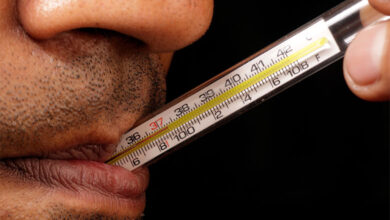Study says no change was found in air pollution during first year of lockdown
In no region of the world is the deadly impact of pollution more visible than in South Asia, where more than half of the life burden of pollution occurs.

New Delhi : During the first year of the Covid-19 pandemic, the world’s economy slowed. Yet, the global annual average particulate pollution (PM2.5) was largely unchanged from 2019 levels.
At the same time, growing evidence shows air pollution, even when experienced at very low levels, hurts human health.
This recently led the World Health Organization (WHO) to revise its guideline (from 10 to 5 �g/m3) for what it considers a safe level of exposure to particulate pollution, bringing most of the world, 97.3 per cent of the global population, into the unsafe zone.
The AQLI finds that particulate air pollution takes 2.2 years off global average life expectancy, or a combined 17 billion life years, relative to a world that met the WHO guideline (5 �g/m3).
This impact on life expectancy is comparable to that of smoking, more than three times that of alcohol use and unsafe water, six times that of HIV/AIDS, and 89 times that of conflict and terrorism.
“It would be a global emergency if Martians came to earth and sprayed a substance that caused the average person on the planet to lose more than two years of life expectancy. This is similar to the situation that prevails in many parts of the world, except we are spraying the substance, not some invaders from outer space,” says Michael Greenstone, the Milton Friedman Distinguished Service Professor in Economics and creator of the AQLI along with colleagues at the Energy Policy Institute at the University of Chicago (EPIC).
“Fortunately, history teaches us that it does not need to be this way. In many places around the planet, like the US, strong policies, supported by an equally strong willingness for change, have succeeded in reducing air pollution.”
In no region of the world is the deadly impact of pollution more visible than in South Asia, where more than half of the life burden of pollution occurs. Residents there are expected to lose about five years of their lives on average if the current high levels of pollution persist, and more in the most polluted regions.
Since 2013, about 44 per cent of the world’s increase in pollution has come from India.
Since 1998, India’s average annual particulate pollution has increased by 61.4 per cent, and currently, it stands as the world’s second most polluted country.
As per AQLI’s new analysis, air pollution shortens average Indian life expectancy by five years, relative to what it would be if the WHO guidelines were met.
In the Indo-Gangetic plains of northern India, 510 million residents, nearly 40 per cent of India’s population, are on track to lose 7.6 years of life expectancy on average if current pollution levels persist.
“By updating the AQLI with the new WHO guideline based on the latest science, we have a better grasp on the true cost we are paying to breathe polluted air,” says AQLI Director Christa Hasenkopf.
“Now that our understanding of pollution’s impact on human health has improved, there is a stronger case for governments to prioritize it as an urgent policy issue.”















